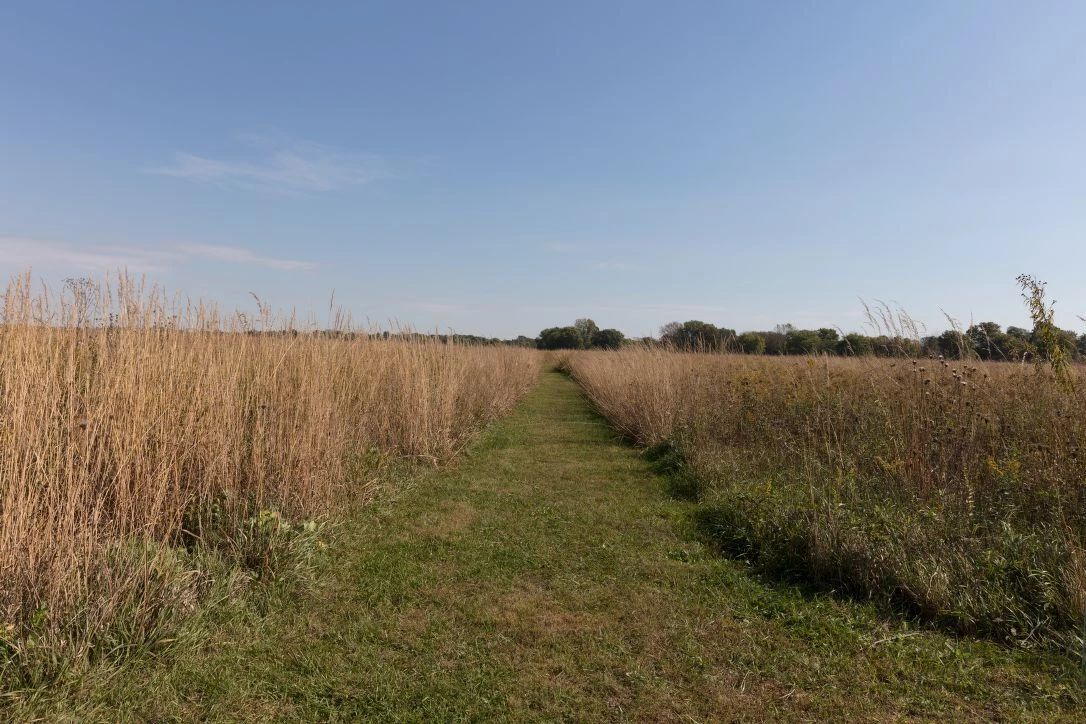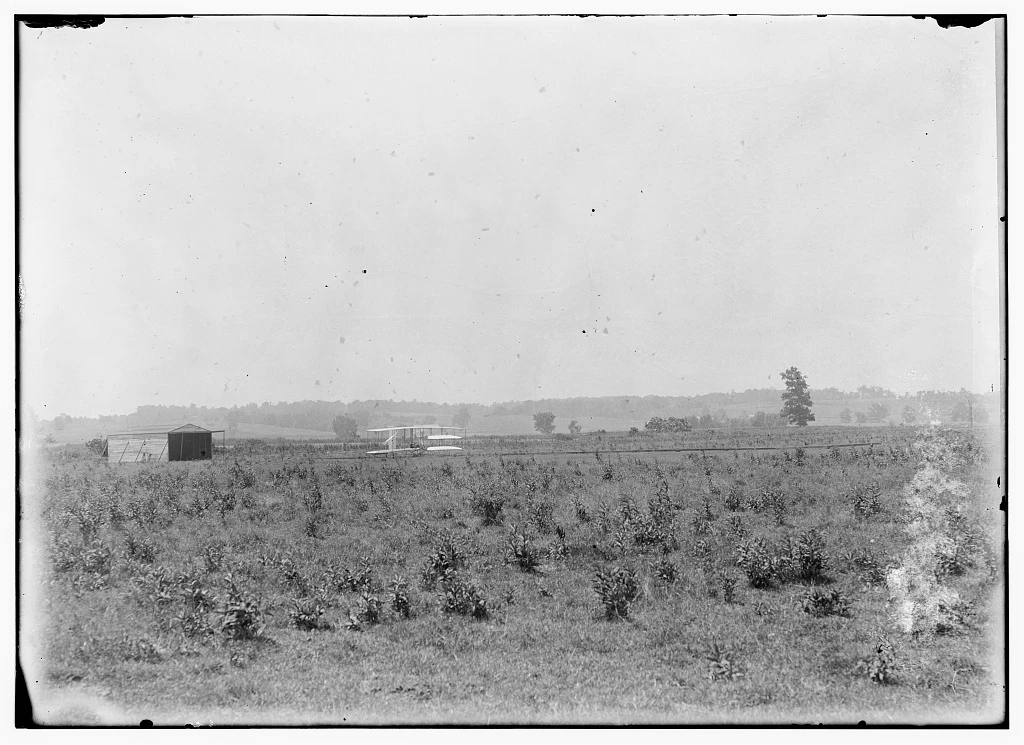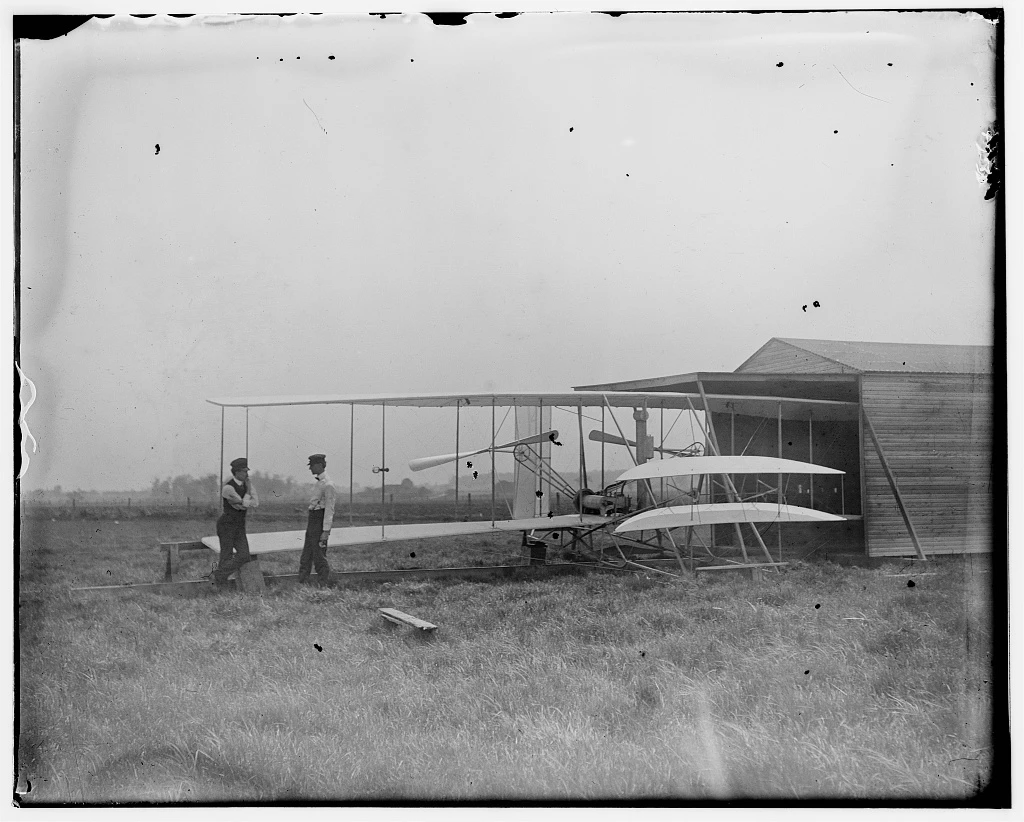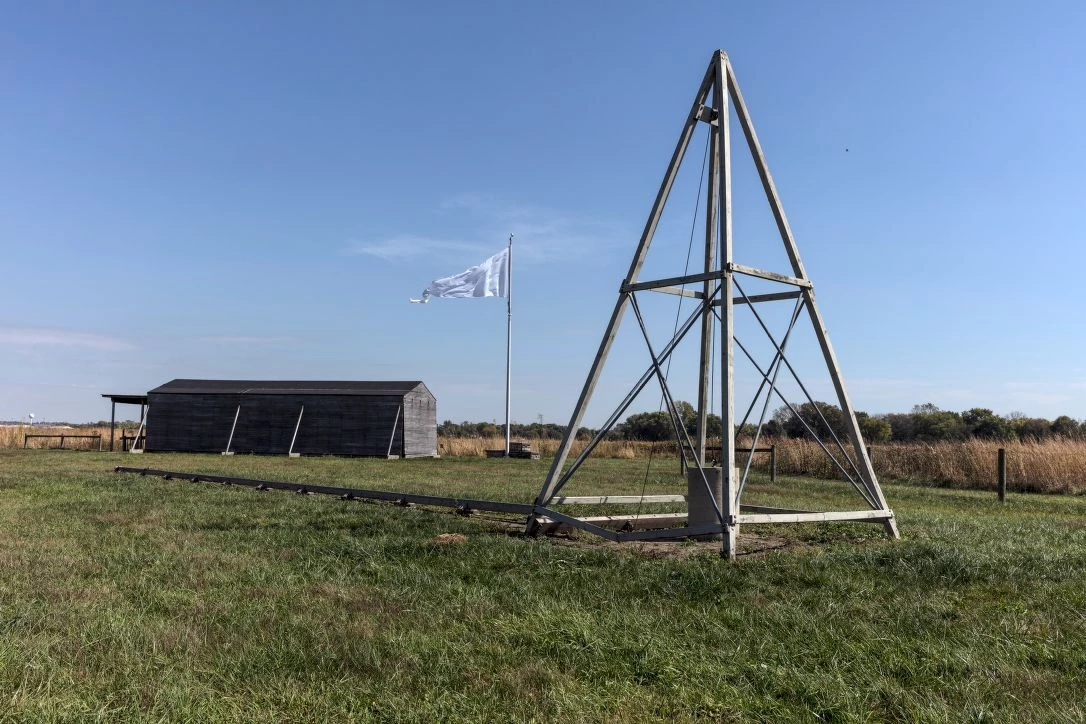Last updated: December 17, 2019
Article
Huffman Prairie Flying Field Cultural Landscape
Introduction
Huffman Prairie Flying Field, located at the Wright-Patterson Air Force Base in Ohio, served as the world’s first aerodrome. Its use proved integral in the development of Orville and Wilbur Wright’s first practical airplane: the Wright Flyer III. After the Wright brothers received a patent for the machine and started airplane production, Huffman Field then became the location for the Wright School of Aviation that trained civilian and military pilots from 1910-1916. The following year, the US Army began leasing land surrounding Huffman Field, which eventually merged to become the Wright-Patterson Air Force Base. In 1990, the Huffman Prairie Flying Field was designated as a National Historic Landmark, and it was put under the administrative control of the National Park Service in 1992.Landscape Description
Huffman Prairie Flying Field is 84 acre site in Ohio’s Bath Township. Although part of Dayton Aviation Heritage National Historic Park, the location of Huffman Field is geographically separate from the rest of the site. Due to its designation as a part of the Wright-Patterson Air Force Base and recurring flooding issues, the area remained relatively resistant to commercial development. It is one of Ohio’s few remaining prairies and is listed as an Ohio Natural Landmark. The interior of Huffman Field lacks tree and shrub vegetation, which provides it an open meadow character although the terrain is somewhat uneven with “hummocks,” or small hills. Woodlands compose the edges of the prairie and the interior contains predominately native and exotic grasses. Historically, during the Wright Brothers use of the prairie, big bluestem and Indian grasses were most prevalent.-- Wilbur Wright to Octave Chanute, June 21, 1904, cited in the Huffman Prairie Flying Field Cultural Landscape Report (pg. 13)Here we must depend on a long track, and light winds or even dead calms. It is skirted on the west and north by trees. This not only shuts off the wind somewhat but also probably gives a slight downtrend. However, this matter we do not consider anything serious. The greater troubles are the facts that in addition to cattle there have been a dozen or more horses in pasture and as it is surrounded by barbwire fencing we have been at much trouble to get them safely away before making trials. Also the ground is an old swamp and is filled with grassy hummocks some six inches high so that it resembles a prairie-dog town.
Historic Use
Long before the recorded periods of significance in the 20th century, the landscape held special meaning to ancient peoples. Archeological evidence suggests the presence of Paleo-Indians around 11,000 BCE and remnants of the Adena Culture 1,000 BCE burial mounds. The Miami, and later, Shawnee tribes also settled in the area around the 18th century.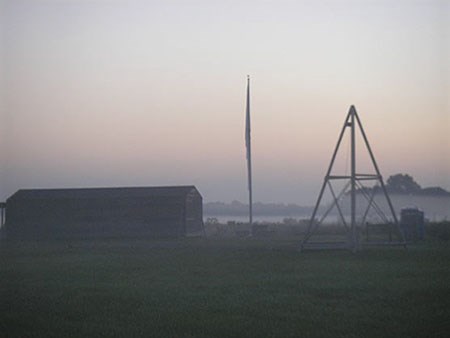
NPS
The improvements the Wright brothers made at Huffman Field to their original invention provided the machine better maneuverability and durability. In addition, it required less reliance on the weather—the prairie lacked both the hills and wind of Kitty Hawk, so the Wright brothers constructed a launching catapult. A replica model exists on the site. The years of experiments and changes culminated in the first practical aircraft that the Wright brothers patented in 1906. They successfully negotiated two contracts to “manufacturer, sell, or license” with a French syndicate and the United State Army.
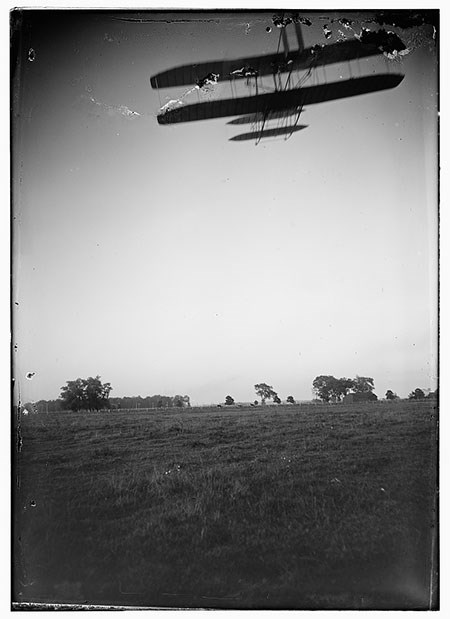
Photo by Wilbur and/or Orville Wright. Library of Congress.
Corresponding to the start of the First World War, the United States government sought to expand its aviation capabilities. In 1917, the Army selected the land surrounding Huffman Field and initially leased 2,074 acres to start a Signal Corps Aviation School. Named Wilbur Wright Field, this installation continued to expand over the years to include McCook Field. The War Department renamed the installation Patterson Field in 1931, which again changed to Wright-Patterson Air Force Base when the Wright Field was added. In the 1940s, the Air Force used the airspace above Huffman Field to calibrate the speed of new planes.
Quick Facts
- Cultural Landscape Type: Historic Vernacular Landscape
- National Historic Landmark
- National Register Significance Criteria: A, B
- Period of significance:
1910-1916 Wright company flying school

